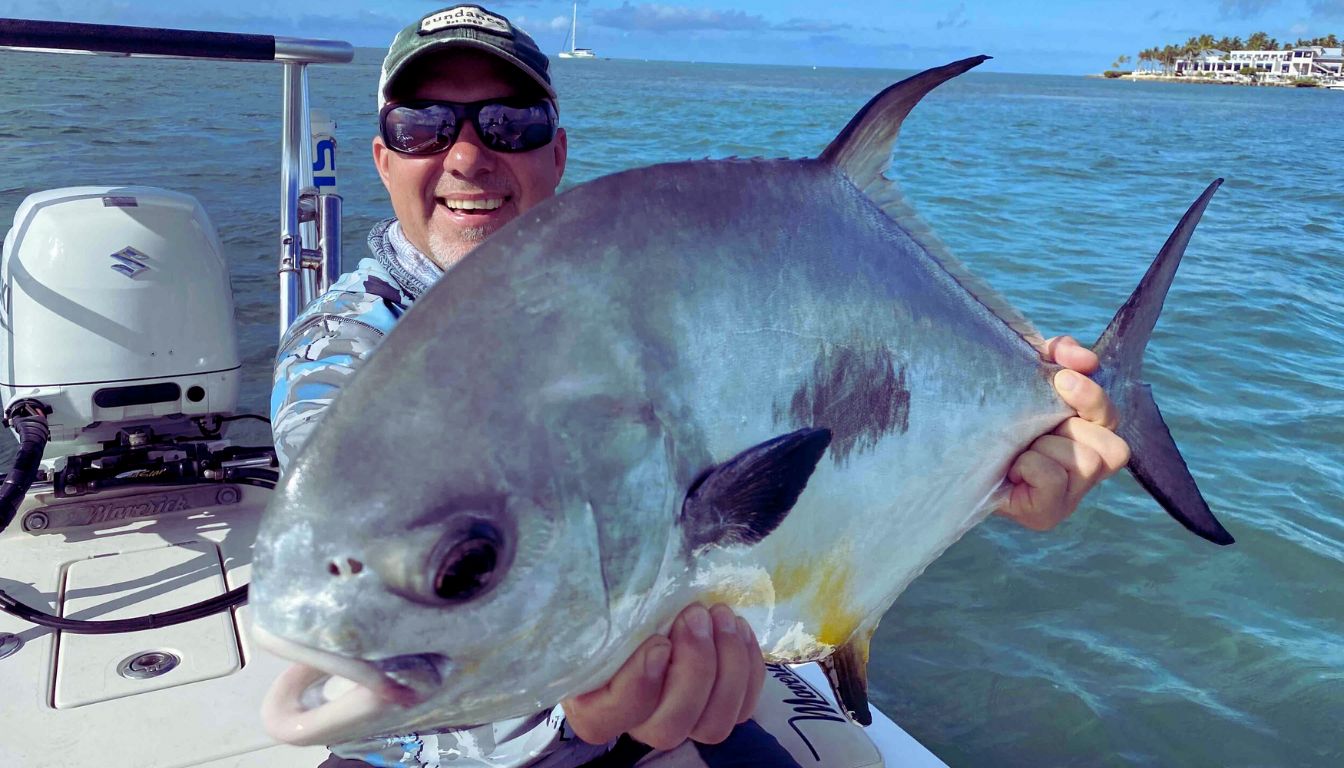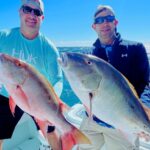2 weeks ago · Updated 2 weeks ago
Islamorada, located in the heart of the Florida Keys, is renowned for its diverse fisheries and year-round angling opportunities. September brings a mix of late-summer action and the first hints of fall migrations, with local guides reporting steady catches across inshore and offshore waters.
Weekly Catches
The catches below cover the last 7 days.
Tarpon
Recent trips in Islamorada have produced a solid bite for juvenile tarpon, especially during evening outings and while targeting snook in the backcountry creeks. Anglers have gone 3-for-3 on smaller tarpon, with additional fish caught incidentally while using pinfish as bait. While the big summer schools have thinned, the fish present are feeding actively, and guides expect another push as the fall bait run begins. The evening half-day trips remain productive, and bait has been consistently available.
- Juvenile tarpon caught in backcountry creeks on pinfish.
- Evening trips showing reliable action.
- Best results reported while snook fishing with tarpon rods out.
Snook
Anglers targeting snook have had mixed results, with some big fish hooked but not always landed. The bite has been best when conditions align, and while not every trip yields a trophy, the potential for large snook remains high in the creeks and mangrove shorelines. Guides recommend persistence and adapting to changing conditions for success.
- Big snook present in creeks and mangroves.
- Best action early in the day or around tide changes.
- Live bait presentations favored.
Mahi-Mahi (Dolphin)
Offshore boats running out of the Florida Keys have reported larger than average mahi-mahi catches for September, with fish found from the reef edge out to 1500 feet. The most productive depths have been between 550 and 850 feet, especially around rips, slicks, and seasoned floating debris. Surface lures such as the Iland Sea Star rigged with Ballyhoo have been especially effective, attracting singles and doubles rather than large schools. Some debris have also held wahoo.
- Larger than normal mahi-mahi caught offshore.
- Best action between 550–850 feet on rips, slicks, and seasoned debris.
- Surface lures and noisy teasers recommended.
Spiny Lobster
The regular Florida lobster season opened August 6th and runs through March 31st, 2026. In Islamorada, harvesters must follow local rules restricting diving and snorkeling within 300 feet of residential or commercial shorelines during the first five days of the regular season. All lobster hunters need a valid Florida saltwater fishing license and a spiny lobster permit. Gear that punctures or crushes the lobster exoskeleton is prohibited, and artificial habitats (“casitas”) are off-limits.
- Lobster season open; valid license and permit required.
- No diving/snorkeling within 300 feet of shorelines for first five days.
- Casitas and certain protected areas are closed to harvest.
Weather & Marine Conditions
September in Islamorada is the height of hurricane season, and charter activity slows as guides fish around passing showers and occasional rain storms. Despite intermittent wet weather, most trips have been able to avoid major disruptions, with only a few instances of anglers getting wet. The overall weather has been favorable for fishing, and conditions are expected to remain stable barring any tropical developments.
Tides & Solunar Activity
Recent reports emphasize the importance of timing trips around tide changes, especially for inshore species like snook and tarpon. Early morning and evening periods have produced the best bites, with moving water stimulating feeding activity in the creeks and mangroves.
Fishing Conditions & Tips
For tarpon and snook, guides recommend using live bait such as pinfish and focusing efforts during tide changes or low-light periods. Offshore anglers should scan for seasoned debris and weed lines, deploying surface lures rigged with ballyhoo to attract mahi-mahi and wahoo. Persistence and adaptability are key, as fish behavior can shift quickly with changing weather and water conditions.
- Live bait (pinfish) effective for tarpon and snook.
- Surface lures with ballyhoo best for mahi-mahi offshore.
- Target tide changes for increased inshore action.
Regulations & Notices
All anglers in Islamorada must possess a valid Florida fishing license, with additional permits required for species such as spiny lobster. Local regulations prohibit harvesting lobster within 300 feet of shorelines during the initial days of the season, and certain protected areas and artificial habitats are closed to harvest. Vessel operators must avoid damaging coral or seagrass and adhere to speed and anchoring restrictions near reefs, navigational aids, and residential shorelines. The use of gear that punctures or crushes lobster is prohibited, and spearfishing is restricted in designated sanctuary areas.
- Valid fishing license and species-specific permits required.
- Harvest and gear restrictions enforced in protected areas.
- Speed, anchoring, and vessel operation rules apply near reefs and shorelines.
Fishing Dashboard 🎣
Your one-stop hub for tides, catches, and weather — tailored to your favorite fishing spots
Islamorada
Loading...

--°F
Loading...

Temperature
--°F
Feels like
Range: --°F / --°F

Wind
-- mph
Direction: --
Quality: --

Precipitation
-- in
Chance: --%
Status: --

Humidity
--%
Relative humidity
Comfort: --

Pressure
-- inHg
Trend: --
Level: --

UV Index
--
Level: --
Protection: --

Visibility
-- mi
Distance visible
Quality: --

Water Conditions
--°F
Water temperature
Waves: -- ft
24-Hour Forecast



Leave a Reply